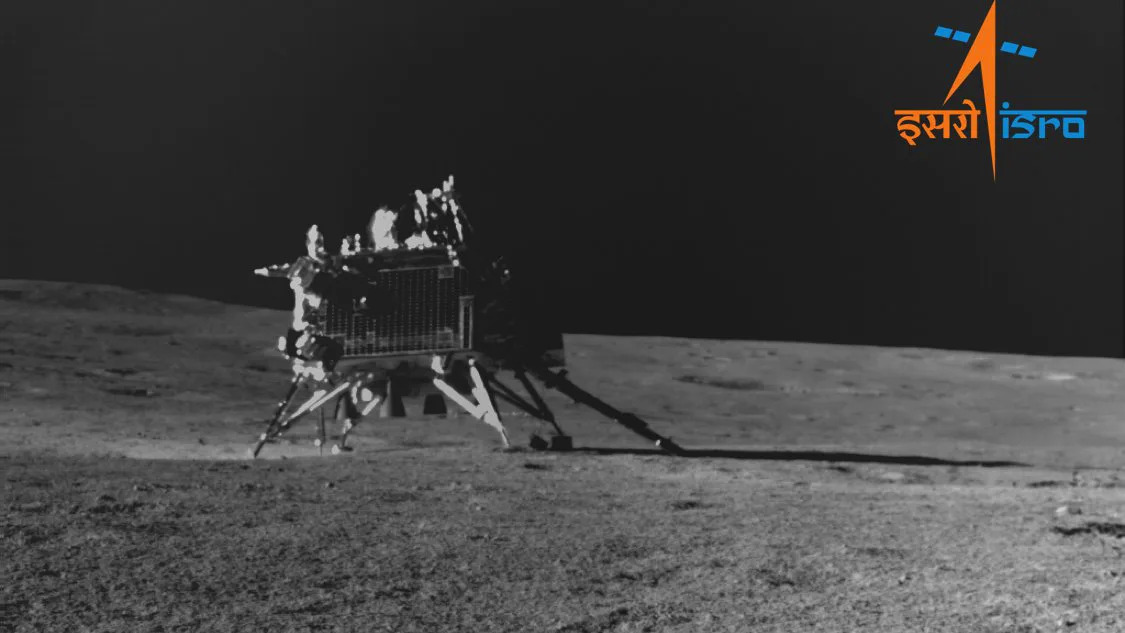Tereza Pultarova
Mon, September 4, 2023

Chandrayaan 3 mission's Vikram lander photographed on the moon's surface by the Pragyan rover.
India's Chandrayaan-3 lunar rover and lander have completed their primary mission goals and are now preparing for the upcoming two-week lunar night. The Indian Space Research Organization (ISRO) hopes the two iconic vehicles might wake up when the sun rises again above the moon's south pole.
The Chandrayaan-3 mission, India's first successful attempt to land on the moon and the world's first successful landing in the southern lunar region, spent a little under two weeks exploring the promising area where deposits of frozen water might exist trapped inside permanently shadowed craters.
On Sunday, Sept. 2, ISRO announced that Chandrayaan-3's Pragyan rover had completed its assignments and had been "set into sleep mode" with its scientific instruments turned off.
"Currently, the battery is fully charged," ISRO said in a post on X, previously known as Twitter. "The solar panel is oriented to receive the light at the next sunrise expected on September 22, 2023. The receiver is kept on."
Related: See 1st photos of the moon's south pole by India's Chandrayaan-3 lunar lander
The Vikram lander, which delivered Pragyan to the lunar surface and conducted its own scientific campaign, followed suit on Monday, Sept. 4.
"Vikram will fall asleep next to Pragyan once the solar power is depleted and the battery is drained. Hoping for their awakening, around September 22, 2023," ISRO said in a post on X on Monday, Sept. 4.
Just before it went to sleep, the lander performed a short "hop," briefly firing its thrusters to move by about 16 inches (40 centimeters), closer to the already sleeping Pragyan rover. This hop may be seen as a test for a future sample return mission that would need to launch from the moon's surface
Chandrayaan-3 landed on the moon on Wednesday, Aug. 23. The Pragyan rover disembarked from the Vikram lander one day later and has since traversed over 330 feet (100 meters) of the lunar surface.
Since the mission began, ISRO scientists have received various measurements including chemical analysis of the moon's surface, a temperature profile of the top 4 inches (10 cm) of the surface regolith and measurements of the tenuous plasma above the moon's surface.
Related stories:
— Why Chandrayaan-3 landed near the moon's south pole — and why everyone else wants to get there too
— India's Chandrayaan-3 landed on the south pole of the moon − a space policy expert explains what this means for India and the global race to the moon
— India tests parachutes for Gaganyaan crew capsule using a rocket sled (video)
India previously attempted to land on the moon in 2019 with Chandrayaan-3's predecessor Chandrayaan-2. That mission's lander, however, crashed due to a software glitch. Landing on the moon is notoriously difficult. Only four countries — the U.S., USSR, China and India — have so far accomplished the feat. Only three days before the Chandrayaan-3 success, Russia's Luna-25 mission slammed into the moon's surface following a botched orbital maneuver. Earlier this year, the Hakuto-R spacecraft operated by Japan-based company ispace hit a crater rim during its descent.
In the future, the NASA-led Artemis 3 mission intends to touchdown in the moon's southern polar region with the first humans to land on the moon since the last Apollo mission in 1972 on board. The deposits of water in the permanently shadowed craters make this area convenient for setting up a lunar base, as this water could be extracted and used for drinking as well as to make oxygen for the astronauts, which would considerably reduce the cost of maintaining the base.
No comments:
Post a Comment